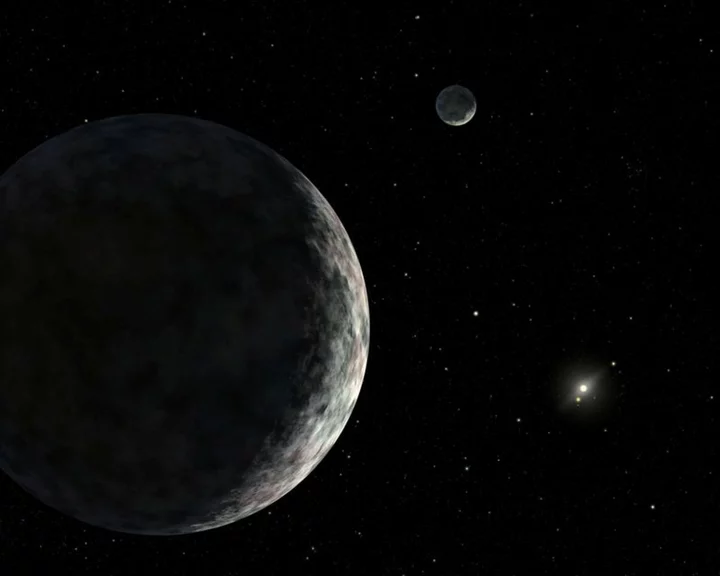By Will Dunham
WASHINGTON Dwarf planet Eris, similar in size to its better-known cosmic cousin Pluto, has remained an enigma since being discovered in 2005 lurking in the solar system's far reaches. While Pluto was explored by NASA's New Horizons spacecraft during a 2015 flyby, Eris - about 40% further from the sun - has never been visited.
But scientists are gaining a fuller understanding of Eris and its differences with Pluto thanks to research that discerns details about this frigid remote world's internal structure and composition based on its orbital relationship with its moon Dysnomia.
Eris, the researchers said on Wednesday, appears to have a rocky interior below a shell of ice. Pluto also has an icy exterior with rock below, but possesses a higher ice content and is thought to harbor an underground liquid ocean.
"We already knew that Eris is more rock-rich than Pluto, but what we didn't know was whether Eris had separated the rock from the ice," said University of California Santa Cruz planetary scientist Francis Nimmo, lead author of the study published in the journal Science Advances.
"That means that Eris got hot enough at some point in its history to melt, so that all the rock sank to the center. The ice is not motionless but is experiencing a slow churning motion, driven by leftover heat from the inside. Most likely there is no liquid ocean inside Eris," Nimmo added.
Eris has a diameter of about 1,445 miles (2,326 km), slightly smaller than Pluto's 1,473 miles (2,370 km). By comparison, the diameter of Earth's moon is about 2,160 miles (3,475 km). Because of its greater concentration of rock, which is denser than ice, Eris has about 25% more mass than Pluto.
"As I like to think of it, take Pluto and add every single asteroid in the asteroid belt, and you get Eris. Pluto is puffed up by ice, while Eris is mostly rock with a little bit of ice on the outer side," said Caltech astronomer and study co-author Mike Brown, one of the three scientists who discovered Eris.
Named after the ancient Greek goddess of discord, Eris orbits at an average of about 68 times further from the sun than Earth, taking 557 years to complete one orbit. Pluto orbits at an average of about 39 times Earth's distance from the sun.
Dysnomia, named after the mythological daughter of Eris, is about 440 miles (700 km) in diameter and composed mostly of ice.
"Just like the Earth-moon system, tides on Eris slowly push Dysnomia away and slow down the spin of Eris. This process has gone to completion: Eris and Dysnomia always present the same face to the other," Nimmo said.
Pluto has this same arrangement with its moon Charon, while the Earth-moon system differs.
"The moon always presents the same face to the Earth, but the Earth does not return the favor," Nimmo said.
Standing on Eris, it would look like dusk at midday due to its great distance from the sun, which would appear like no more than a particularly bright star in the sky.
"On Eris, you could block out the sun with the head of a pin," Brown said.
Eris and Pluto reside beyond Neptune, the outermost of our solar system's eight plants. The International Astronomical Union, which sets definitions for planetary science, recognizes five dwarf planets - Ceres, Haumea and Makemake, in addition to Eris and Pluto - though dozens more may qualify. Eris is the most massive of them.
The new findings fill in some blanks about Eris.
"It helps to put Eris in the context of all of the information that we've learned about Pluto, with its big mountains and giant impact basin, and forces us to remember: each of the largest dwarf planets is unique and we should be cautious about inferring too much from what we know about Pluto," Brown said.
(Reporting by Will Dunham, Editing by Rosalba O'Brien)









